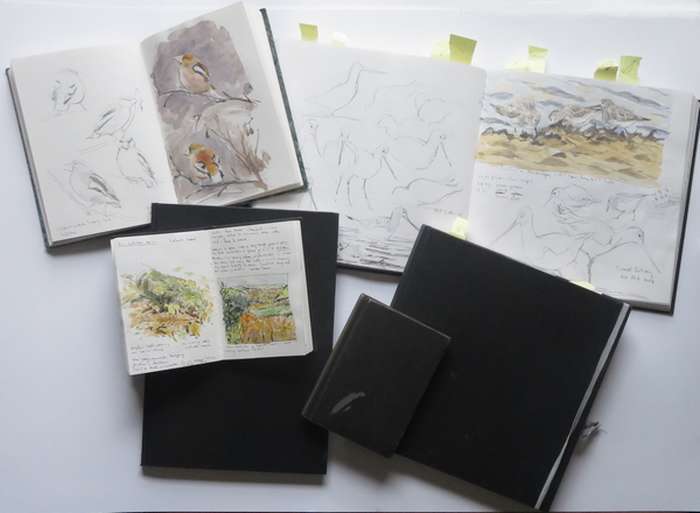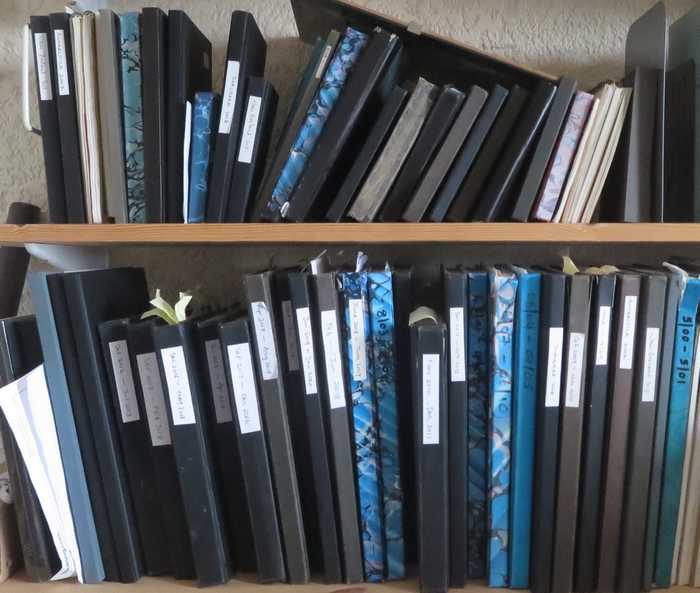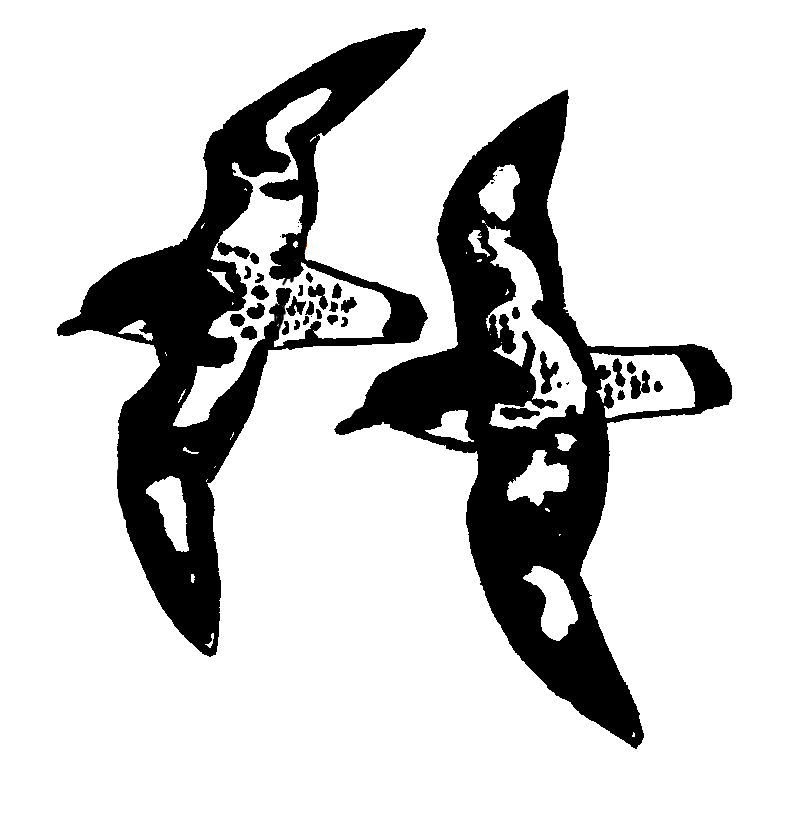Sketchbook
Drawing and painting directly from life is the basis for all I do. For generating ideas and artistic energy, there is no substitute to working in the field, and for me, it seems the most rewarding part of the art-making process. Back in the studio it can be hard to recapture the excitement and intensity of actual wildlife encounters. Studio art is a different sort of image making: more contemplative, more considered, sometimes more experimental.
I like using hard-backed sketchbooks. But there is a danger that bound volumes can become a bit precious . They inhibit risk taking. So increasingly I work on loose sheets of paper, with the idea that my mark making can be bolder, looser, reckless even, and if it all goes horribly wrong, I can toss the result in the bin and no-one will be any the wiser!


Easier said than done, however. Very often, confronted with wonderful wildlife, dynamic action, or amazing landscape, I abandon all thoughts of ART and all I can do is respond , falling back to the comfortable ways of working in a desperate attempt to simply capture something. As for materials, I mostly use graphite, charcoal or dark pastel together with watercolour and perhaps coloured pencil. The degree of finish depends much on the subject, available time and my mood. Some sketches remain no more than fragments. Others can be considered "finished" paintings, and some of these you can see below and in the other gallery pages.
Sometimes I go out with some specific aim in mind, but most often I let the subject dictate what sort of picture making I do. The fieldwork is largely an end in itself. So here are some examples of sketches. To give some structure, I've arranged them according to notional "purpose", but really, any given sketch will usually tick several boxes. Drawing is a great way of getting to know a subject — a way of learning, exploring and gathering information. Here are some examples of sketchbook pages which are mostly about learning and information. (Click on the images for a larger view and even more waffle.)
Sometimes it's more about the light. (I've just noticed that these three all have a similar colour scheme - that is because they are all late-in-the-day winter scenes.)
Othertimes, if things are going well, I may start thinking a bit more compositionally - either in groupings of birds or other animals, or in terms of the overall scene.
And, if things are going fabulously well, I may turn out a "finished" painting or drawing. By that, I mean something I could consider framing and hanging on the wall: basically an image I like and that seems complete in itself. (But not necessarily something that is accurate, or detailed.)
Of course, many times, encounters with wildlife are fleeting, or exciting action is over in the blink of an eye. So not all sketches are well finished. Many have defects, some are barely recognisable, and my sketchbooks are full of such fragments! They may not be great drawings, but all represent authentic moments and speak a certain truth. It is surprising to what extent they tigger memories and just how much can be made from them. Hover your cursor over the images for a magnified view - they don't really merit a full page description.

Female bullfinch beating up a blue tit.

Great spotted woodpecker feeding chick at nest hole.

Marsh tit feeding in catkins.. yes, honestly!

Roe deer turning and stooping to feed.
Finally, and probably best of all, some sketches are just for fun. Pure enjoyment. When there's no specific purpose, and I really don't think or care about the result.















